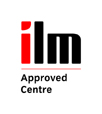Creating High Performance Teams
There are a few key steps involved when creating a high performance team:
Listen to the Individuals
It is said that people don’t feel part of a team until they know that they are seen and heard as individuals. There is very often little time to really get to know team members within the working day and who people are takes second place to what they do. Yet, by understanding who team members are and what motivates them, not only do we become better managers but we also create more engagement by providing a space where they are seen and heard. By engaging team members in this way and valuing who they are is the first and most powerful step in taking people from a “me” mentality to a “we” culture. This doesn’t have to just be limited to managers and their individual reports, when team members get to know more about each others’ values, aspirations and motivations, authentic team motivation becomes possible and collaborative working a reality that gets results while making the experience of being in the team personally rewarding and genuinely supportive.
Create a clear and compelling vision
Once you have the team set up, you are now ready to work with them to create a vision of the ideal team and the team’s core values. By involving the team itself in this visioning process, and allowing their personal values to be part of the team vision, you are creating a team that has heart and meaning and the full engagement of the team. This can be done creatively, through effective brainstorming and facilitation techniques sometimes with the support of an external facilitator who is not a team member. This allows all parts of the team, including the leader to take part in the process.
Design an Alliance – And Keep Designing It!
When a new team is created and as it changes and grows, certain norms and unspoken rules are formed, often reflecting the unspoken culture of the team. These can range from everybody works more than their normal hours to taking turns to buy cakes on a Friday. These norms quickly become embedded in the team culture and are often created unconsciously, without the full agreement of the team. By taking the time to design how your team works together, you create intentional norms that work for everyone.
Here are some topics that might be discussed in a designing meeting:
- How do we want to work together?
- Guidelines for what’s acceptable
- Expectations
- Outcomes
- Bringing out the best in each other
- Support systems
- What do we need to thrive?
- Creating an atmosphere of trust where people can be authentic
The designed alliance is dynamic and changes over time to continue to meet the needs of those involved. The alliance helps both parties clarify responsibilities and identify how best they can work together. Including a designed alliance gives employees, colleagues and direct reports, input and ownership and increases the likelihood of a motivated and successful team.
Make Time for Meaningful Conversations
Team-building is not a one-off, it’s an on-going process and one that has to include conversations beyond the day-to-day tasks the team are involved in. Giving time each month to let team members discuss what’s important to them, refine how they work together and review where they are and where they are going saves time in the long-term. It clears the air of anything that is unsaid or unresolved, it brings the team back together and it focuses everyone back to the vision and the purpose that they have jointly created.
If you would like to find out how a Leadership and Management grant could help you take your team to the next level, please contact [email protected] for more information and a free session.
Article by Fiona Monks





